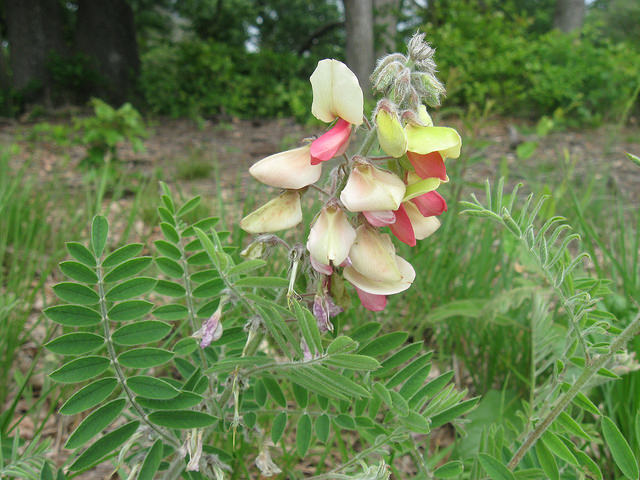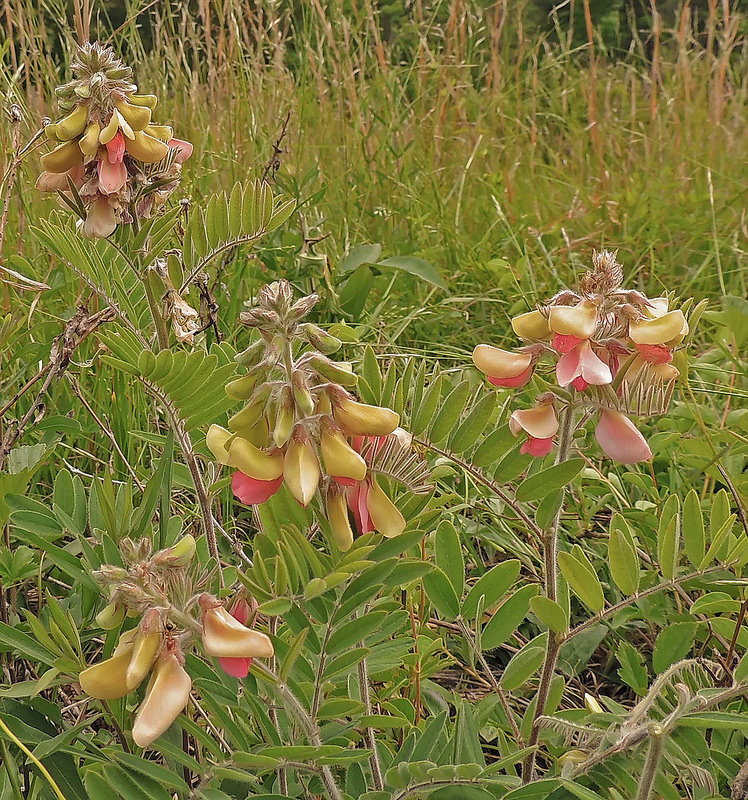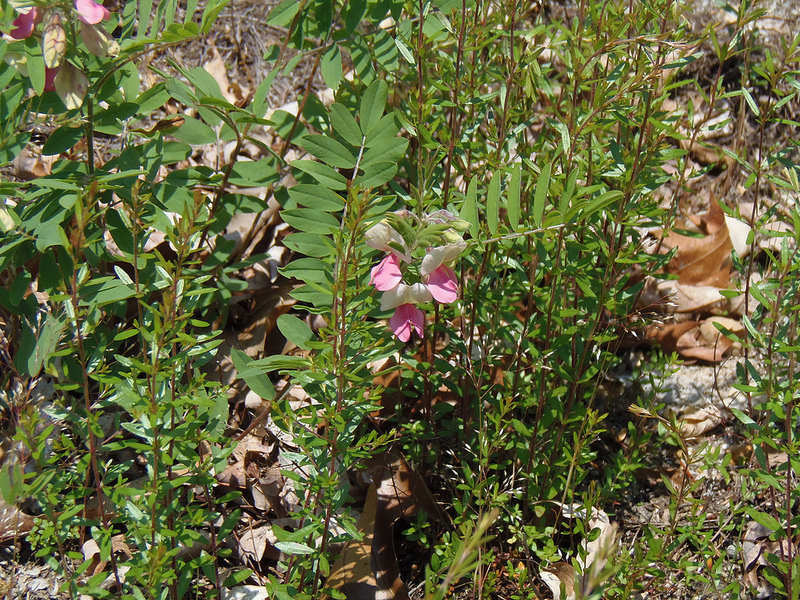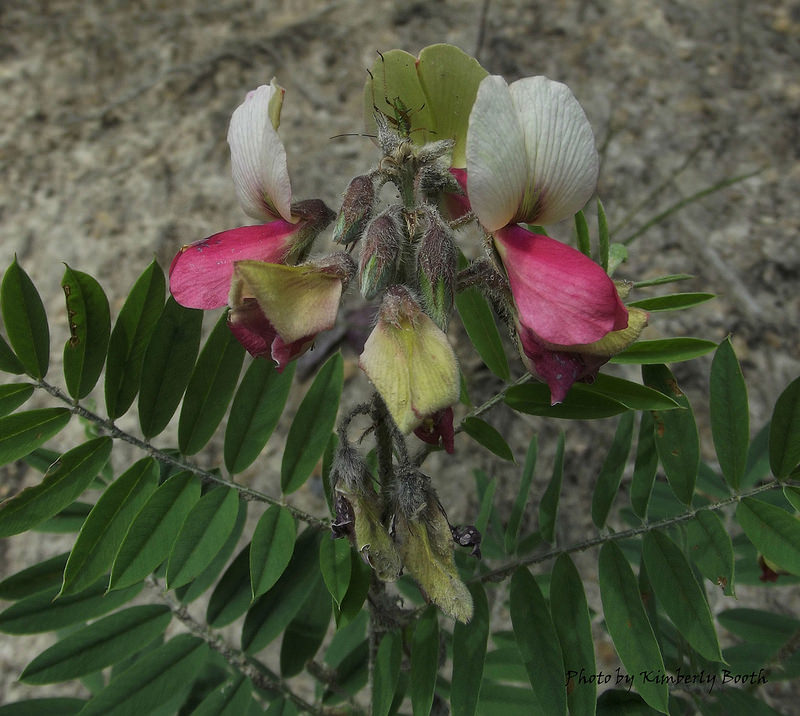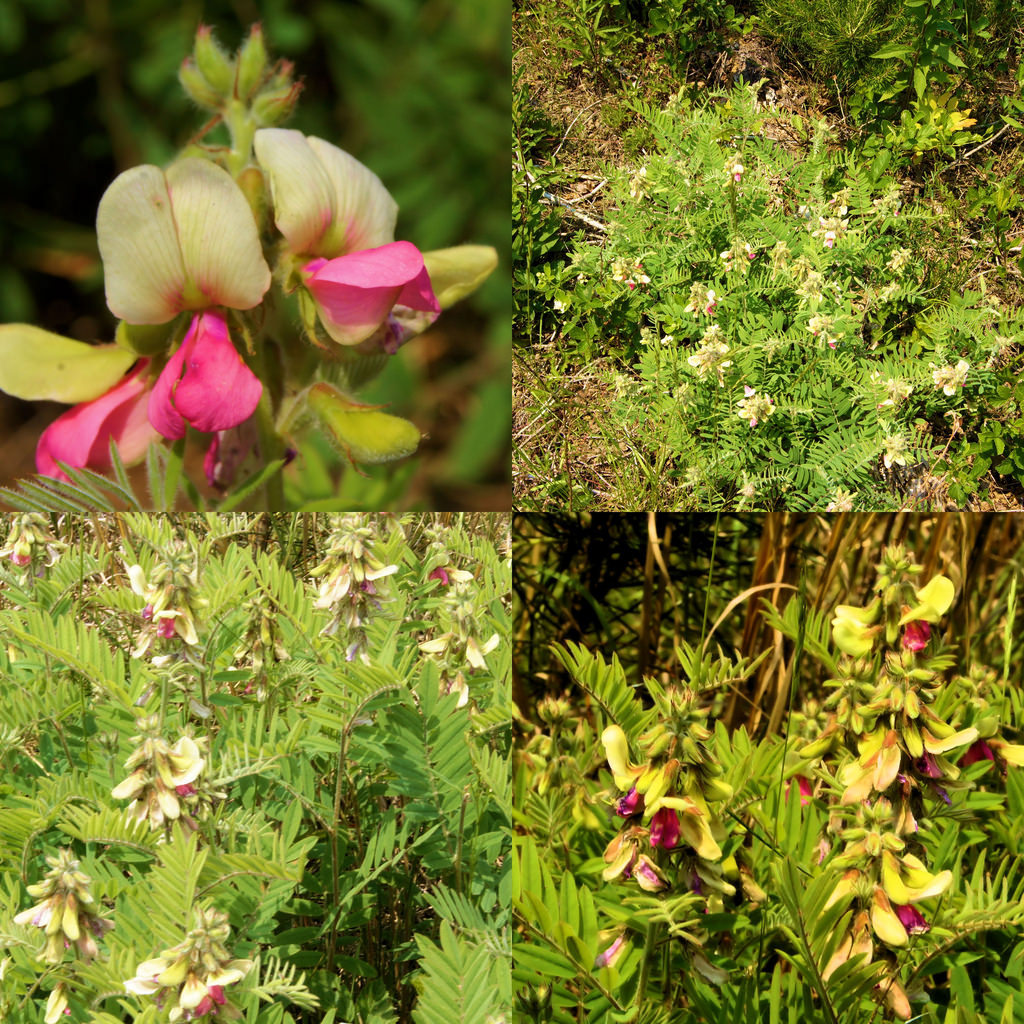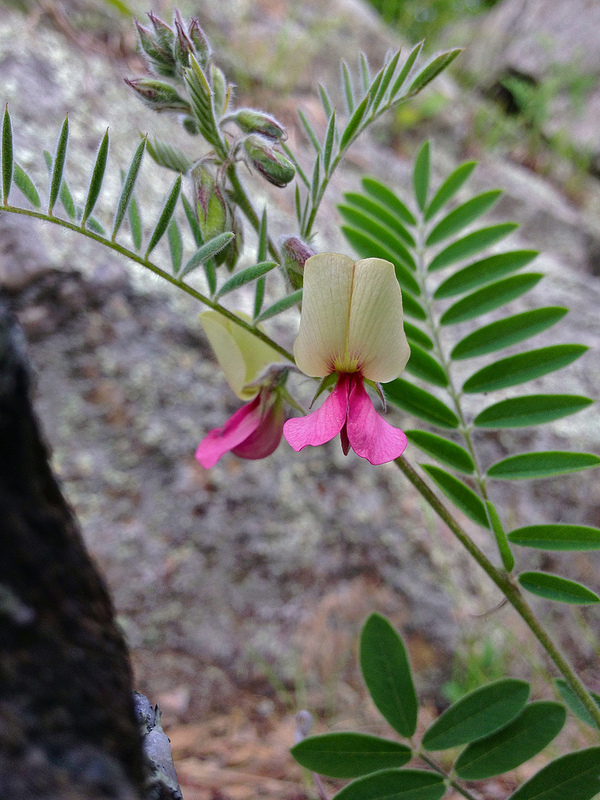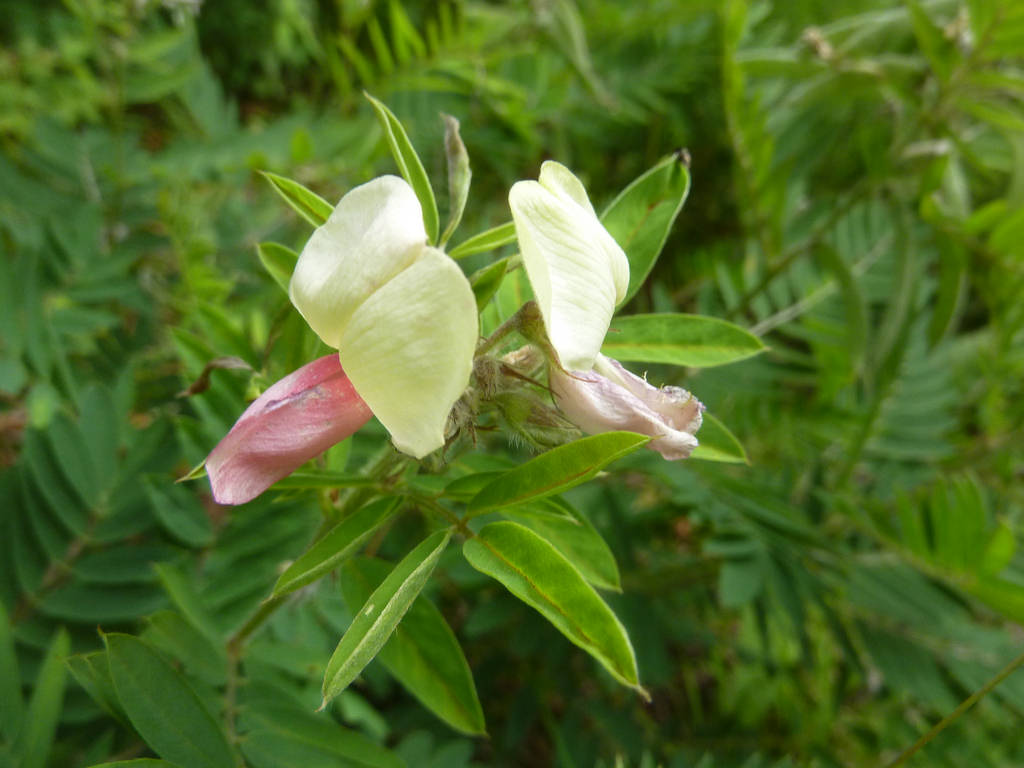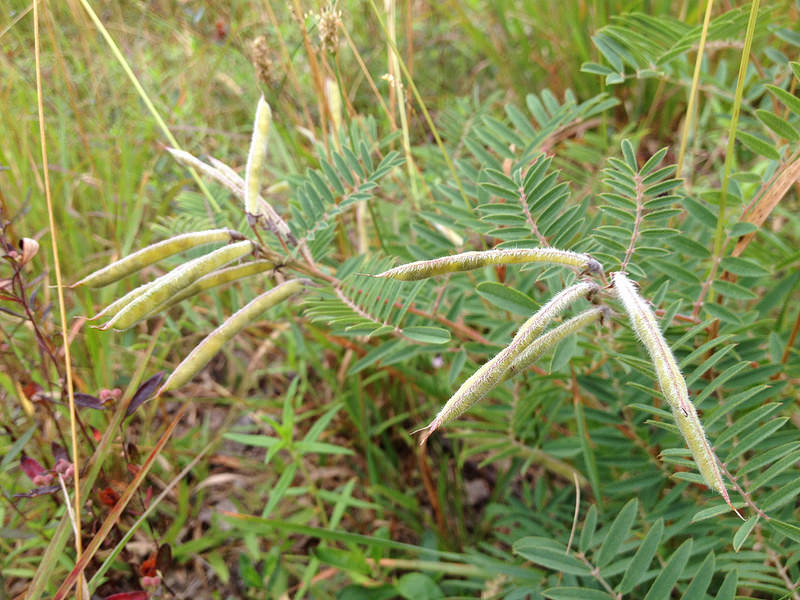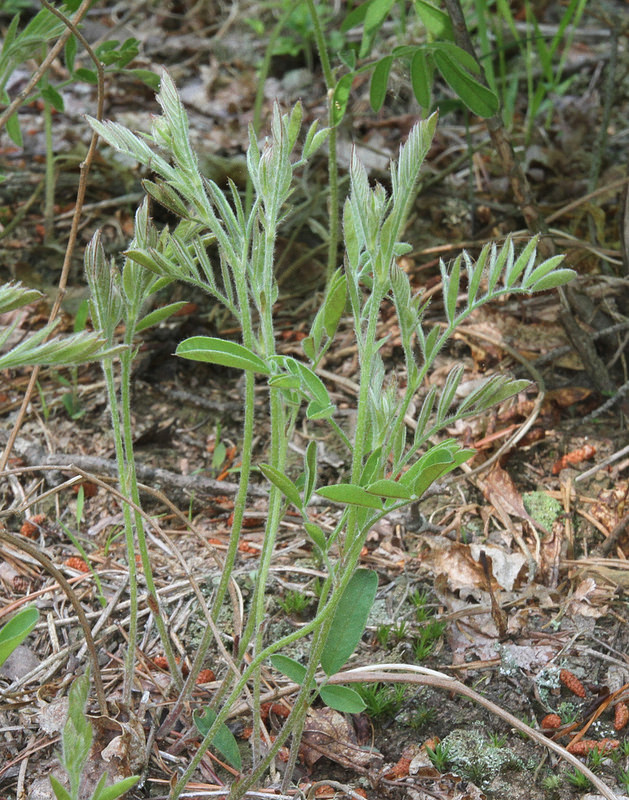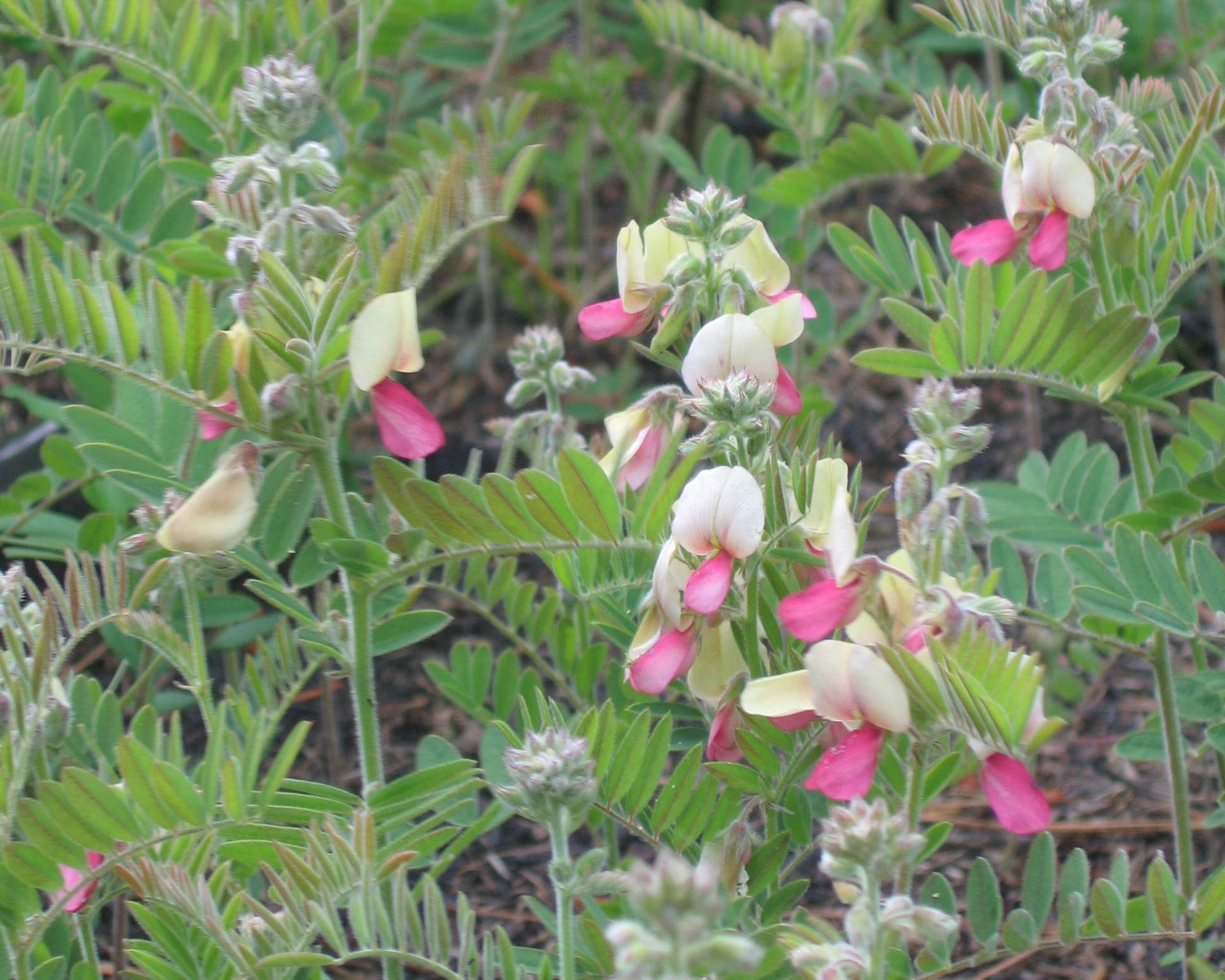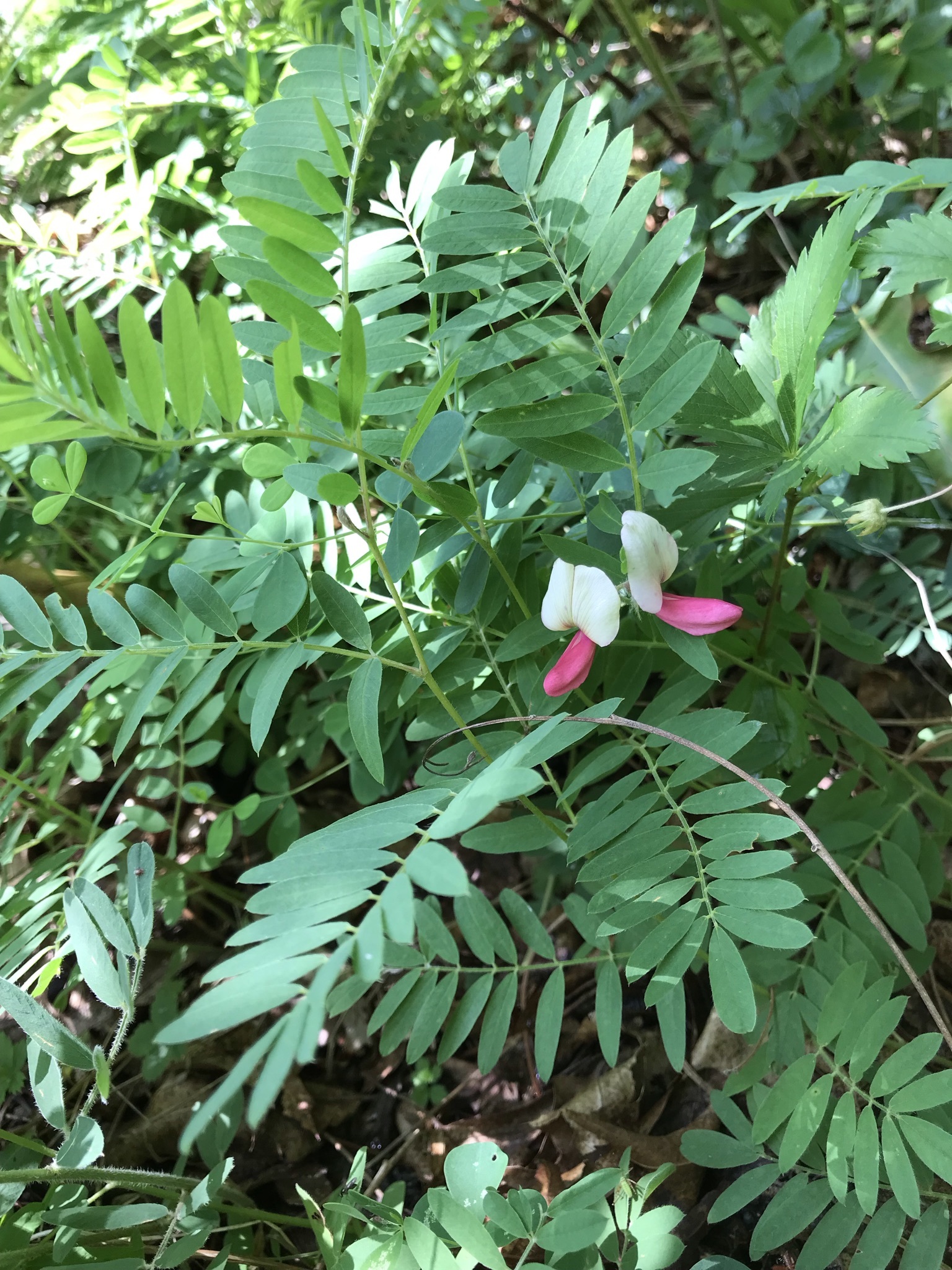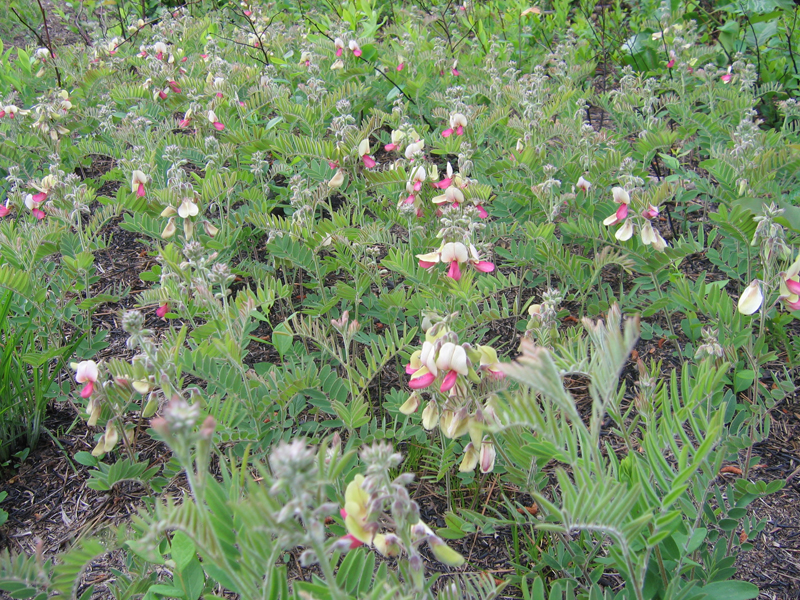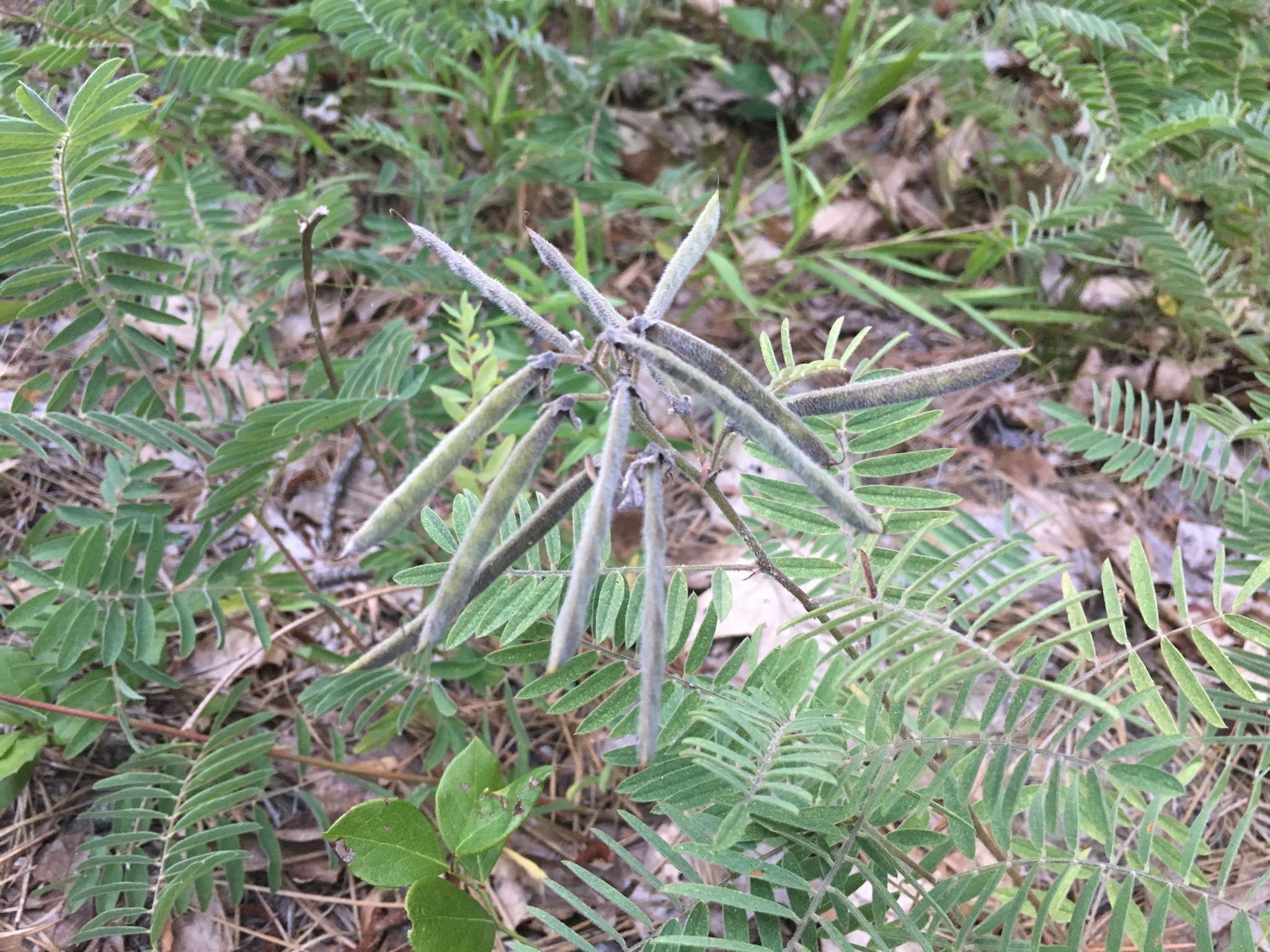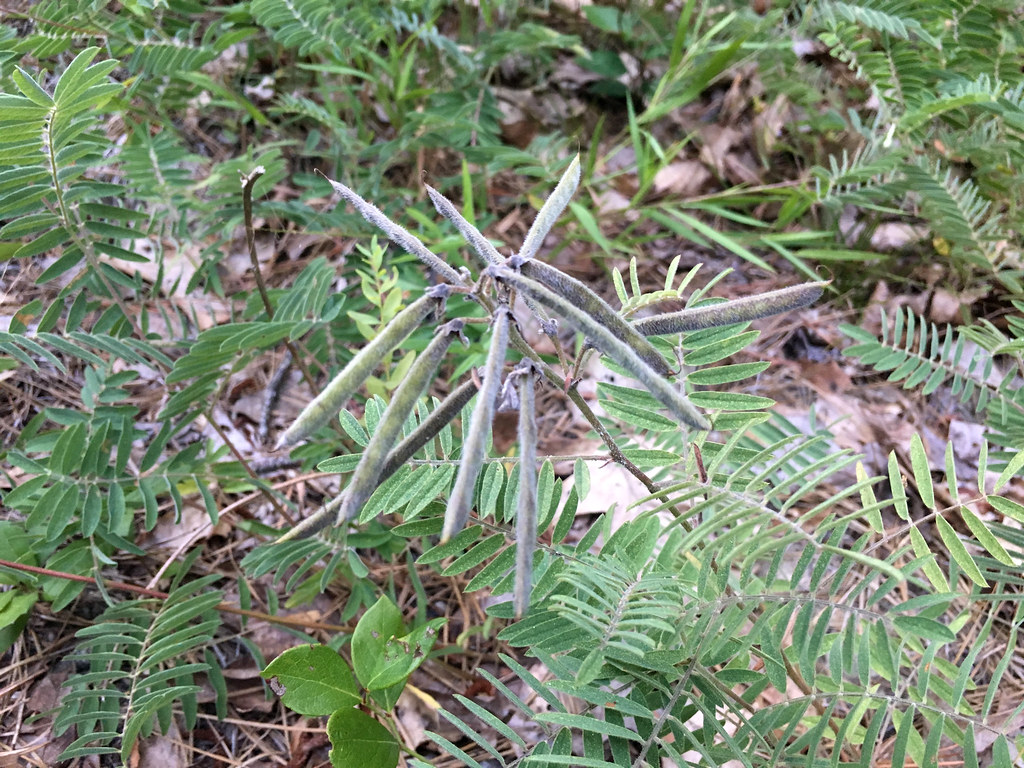Map Snapshot

















147 Records
Status
Uncommon across Maryland but may be absent from the Allegheny Plateau. Blooming occurs from late May through the second week of July. Prefers open to partially shaded sandy acidic habitats.
Description
The bi-colored pink and whitish-yellow flowers along with the hairy clump forming foliage make for easy identification.
Relationships
Host plant for caterpillars of Southern Cloudywing. The leaf beetle Soybean Leaf Miner is known to feed on the foliage of Goat's-rue.
Seasonality Snapshot
Source: Wikipedia
| Tephrosia virginiana | |
|---|---|

| |
| Scientific classification | |
| Kingdom: | Plantae |
| Clade: | Tracheophytes |
| Clade: | Angiosperms |
| Clade: | Eudicots |
| Clade: | Rosids |
| Order: | Fabales |
| Family: | Fabaceae |
| Subfamily: | Faboideae |
| Genus: | Tephrosia |
| Species: | T. virginiana
|
| Binomial name | |
| Tephrosia virginiana | |
| Synonyms[2] | |
| |
Tephrosia virginiana, also known as goat-rue, goat's rue,[3] catgut,[3] rabbit pea,[3] Virginia tephrosia,[3] hoary pea,[4] and devil's shoestring[5] is a perennial dicot in family Fabaceae. The plant is native to central and eastern North America.
Description
[edit]This subshrub is low and bushy, growing to 60 centimetres (2 ft), but more often shorter. Its leaves are alternate and compound, usually with 8 to 15 pairs of narrow, oblong leaflets.[4] Soft white hairs on the leaves and the stem give them a silvery, or hoary, appearance.[6]
The flowers look similar to other flowers in the pea family and are bi-colored, with a pale yellow or cream upper petal (the standard), and pink petals on the bottom (the keel and wings).[5] The flowers are grouped into clusters at the top of the stems and bloom from May to August. The seed pods that form after the flowers bloom are small, approximately 5 centimetres (2 in) long.[4]
The roots are long and stringy, which is probably the source of the common names catgut and devil's shoestrings.[5]
Distribution and habitat
[edit]This plant prefers acidic soils, in part to full sun.[7] It grows throughout the Midwest, New England and southeastern United States.[8] Not easy to propagate because of the relationship it has with the acid soil it needs,[9] this plant can be found in sand savannas, open woods and glades, prairies and rocky soils.[4]
Toxicity
[edit]All tissues of this plant are toxic (containing rotenone), and should not be eaten by people or livestock. Crushed stems were previously used as a fish poison.[10]
Conservation
[edit]While ranked as secure rangewide by NatureServe,[1] T. virginiana has been listed as an endangered species in Canada under Schedule 1 of the Species at Risk Act since 2003.[11] Only two populations exist within black oak savanna and black oak woodland in Ontario.[11]
Historical uses
[edit]According to James Mooney, Cherokee Indian women used to wash their hair in a decoction made from its roots to prevent their hair from breaking or falling out.[12]
References
[edit]- ^ a b NatureServe (1 March 2024). "Tephrosia virginiana". NatureServe Network Biodiversity Location Data accessed through NatureServe Explorer. Arlington, Virginia: NatureServe. Retrieved 22 March 2024.
- ^ "The Plant List: A Working List of All Plant Species". Retrieved 26 July 2014.
- ^ a b c d "Tephrosia virginiana". Germplasm Resources Information Network. Agricultural Research Service, United States Department of Agriculture. Retrieved 14 January 2018.
- ^ a b c d Denison, Edgar (2017). Missouri Wildflowers (Sixth ed.). Conservation Commission of the State of Missouri. p. 64. ISBN 978-1-887247-59-7.
- ^ a b c "Lady Bird Johnson Wildflower Center - The University of Texas at Austin". www.wildflower.org.
- ^ "Tephrosia virginiana (Catgut, Devil's Shoestring, Goat's Rue, Hoary Pea, North American Turkey Pea, Virginia Goat's Rue, Virginia Tephrosia, Wild Sweetpea) | North Carolina Extension Gardener Plant Toolbox". plants.ces.ncsu.edu.
- ^ "Tephrosia virginiana - Plant Finder". www.missouribotanicalgarden.org.
- ^ USDA Plants Database
- ^ "Goat's Rue". www.fs.usda.gov.
- ^ Zhang, Peiwen; Qin, Deqiang; Chen, Jianjun; Zhang, Zhixiang (21 October 2020). "Plants in the Genus Tephrosia: Valuable Resources for Botanical Insecticides". Insects. 11 (10): 721. doi:10.3390/insects11100721. PMC 7589259. PMID 33096762.
- ^ a b "Virginia Goat's-rue (Tephrosia virginiana)". Species at risk public registry. Government of Canada. 12 December 2023. Retrieved 22 March 2024.
- ^ Mooney, James (1891). "The Sacred Formulas of the Cherokees". Seventh Annual Report of the Bureau of Ethnology. Washington DC: Government Printing Office. pp. 301–398. OCLC 747738317., s.v. Selected List of Plants Used
- Peterson, Lee. (1977) A Field Guide to Edible Wild Plants of Eastern and Central North America. Houghton Mifflin Company, Boston. p. 82.
External links
[edit]
